Summary
There is no single or straightforward answer to this question. It appears that loss of habitat, disease, and competition with the larger Grey squirrel are all factors. Some areas have seen declines in Reds that closely match the spread of the Grey, while in other parts of the country the two species have co-existed for years. The evidence suggests that Greys competitively exclude Reds, i.e., they monopolise food resources, rather than fighting with them and driving them out of an area.
The squirrelpox virus, which can be carried by Greys but is usually fatal to Reds, also appears to be a significant factor in the Red squirrel's decline; populations fall up to 25 times faster in areas with squirrelpox. There are several projects underway to understand the decline with a view to reversing it. Some projects have attempted to exterminate Greys from prime Red squirrel habitat, but such schemes are costly, long-term and have, with a couple of exceptions, failed. Achieving complete elimination of the Grey squirrel from the UK seems highly unlikely at this time.
The details
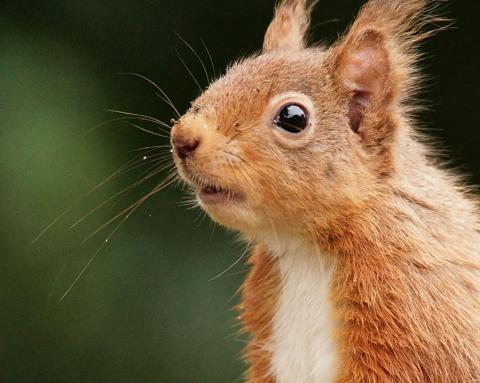
Archaeological data for Red squirrels (Sciurus vulgaris) in Europe is rather scant, not least because most squirrel bones are small and fragile. The earliest remains date to middle Pleistocene (between 780,000 and 120,000 years ago) Hungary, but the oldest conclusively-dated remains from Britain come from Binnel Point on the southeast coast of the Isle of Wight, and suggests their presence about 4,500 years ago. The general consensus among archaeologists and biologists is, nonetheless, that Sciurus vulgaris colonised Britain at the end of the last ice age, some 10,000 years ago. With this in mind, it's important to recognise that the Red is considered a native species, which is not the same as saying current residents are native. Squirrels were imported from continental Europe to boost Britain's population on several occasions (see below) and many of today's populations appear to have a Scandinavian origin.
Historically, the Red squirrel appears to have been abundant in Britain, but has been in decline across the UK for most of the last century. Habitat change, particularly to make way for farming, and persecution as a pest of forestry have, as we'll see, played a part. It is the arrival and spread of an alien species, the Eastern Grey squirrel (Sciurus carolinensis), introduced from North America in 1876, however, that appears to correspond most widely to the Red's decline.
Red squirrel populations in Britain have suffered many times throughout their history. For example, Reds were actively hunted in the New Forest (Hampshire) during the 19th Century; in her book Squirrels, Jessica Holm states that in 1889 nearly 2,300 were shot there because they were considered a pest to the timber industry. In his 1920 book, The Influence of Man on Animal Life in Scotland, Royal Museum of Scotland assistant keeper James Richie describes a startling level of persecution in Scottish forests, following the reintroduction of Reds to the Highlands that Lady Lovat championed in 1844:
"The Highland Squirrel Club was formed in 1903 to counter the devastation wrought in the woods of eastern Ross-shire, part of Sutherland, and that portion of Inverness north of the Caledonian Canal. The results of its activities are astounding, when it is recollected that three-quarters of a century ago the Squirrel was unknown in the district. During the fifteen years up to the end of 1917, 60,450 Squirrels had been killed; in 1903 alone 4640 were destroyed, in 1907 6628, and 1909 provided a record of 7199 individuals."
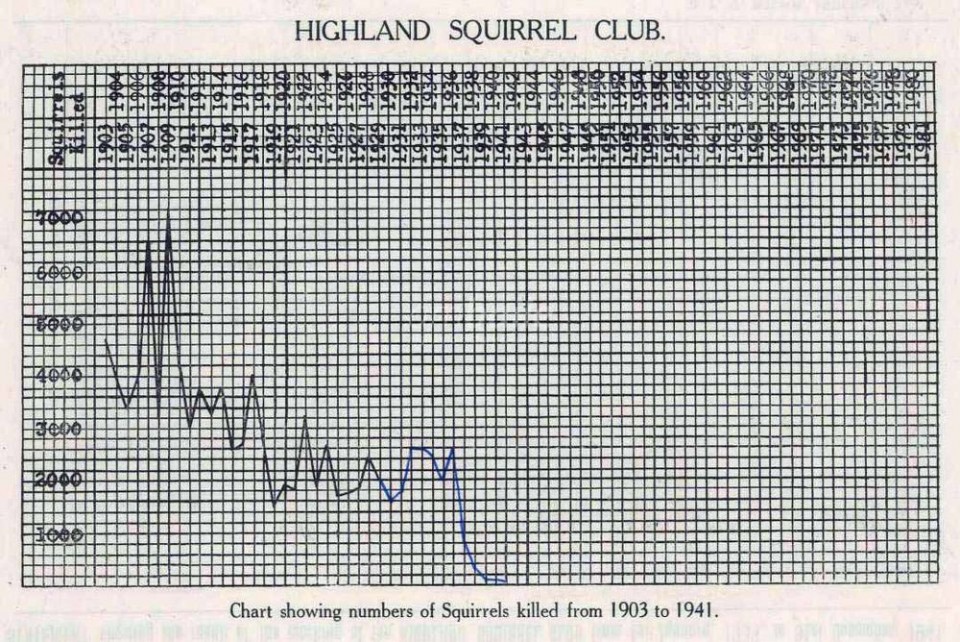
Between 1900 and 1925 there was a dramatic decline in the number of Reds in Britain. So noticeable was the decrease that hunting had been suspended in the New Forest by 1927 and Adrian Middleton noted that, by this time, some 21,352 Reds had been killed there since 1880. Further declines were recorded between 1939 and 1943, attributed to the felling of forests to meet timber demands imposed on the country during the World Wars and several exceptionally cold winters. During the early 1900s, some naturalists were writing about how Greys were appearing in their gardens and chasing away the Reds, and by the mid-1940s it was apparent that Grey squirrels had become well established and that Reds were in serious decline across the country. Overall, the Red squirrel population in Britain has been in decline for most of the last century.
Whys & wherefores
Despite knowing what is happening to the Red squirrel population, one of the most controversial of all current British conservation debates is why is this happening? Currently there are three main schools of thought on the subject: Greys are actively fighting with Reds and driving out; Greys are out-competing Reds for food, space, breeding sites and so forth; and Greys are spreading disease that is killing off Reds. There is also a smaller school that considers the decline of the Red to have more to do with poor management of our countryside than the introduction of the Grey squirrel. Most biologists agree this has been a factor, but that it exacerbates the impact of one of the main three theories, rather than being a direct cause.
Greys actively attacking & driving off Reds
In 1917, Sir Frederick Treves protested that Greys, in driving out our Red squirrel, "eat everything that can be eaten, and destroy twenty times more than they eat”. Indeed, it appears to be a common belief that Greys fight with and forcibly evict Reds from areas they colonise. One discussion on an Internet board to which I subscribed several years ago implied Grey squirrels had got together and instigated a coup d'etat against the British Red! The reality appears to be much less dramatic. Greys certainly tend to be larger than Reds and are known to fight with other Greys over food and territory, and it is perhaps this size disparity and aggression that has driven rumour that they also physically push Red squirrels out. I have come across a handful of unverified reports of Greys and Reds fighting, but the science suggests that they are no more antisocial towards each other than they are to their own kind and, in most cases, the two species ignore one another.
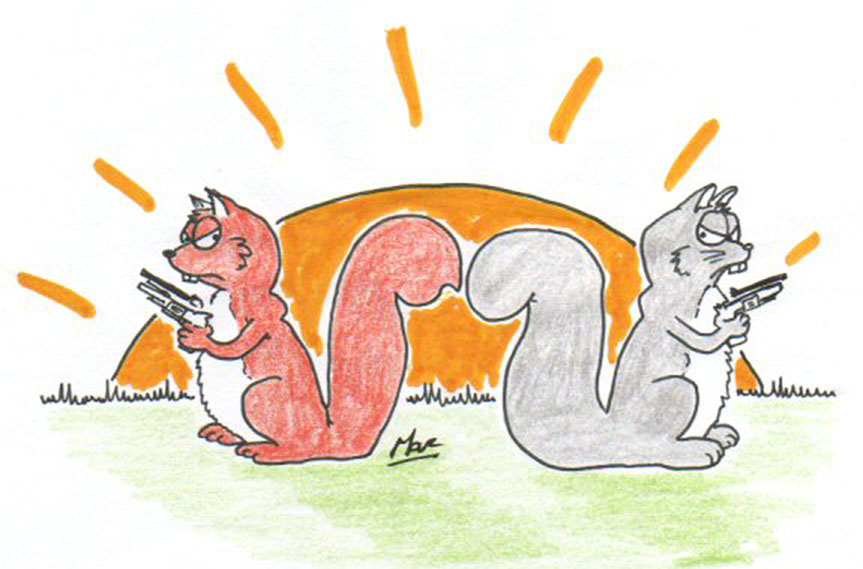
Between July 1996 and October 1998, Luc Wauters and John Gurnell radio-tracked and observed Red and Grey squirrels in two areas of woodland in Italy: a site in Lombardy in the north of the country containing only Reds, and a similar habitat at Piedmont with Reds and Greys present. In a paper to the journal Ethology in 1999, Wauters and Gurnell reported that there were no more aggressive encounters between squirrels at the Red-Grey site than at the Red-only site; in fact, most interactions at both sites were non-aggressive. During 32 Red-Grey encounters they witnessed a single case of a (lactating female) Grey chasing a Red, and one case where a male of each species foraged in the same tree without paying any attention to each other.
Despite early anecdotal reports that male Greys are attracted to Red females in oestrous, the biologists observed no attempts by Greys to get involved in Red mating chases or covet female Reds. When Wauters and Gurnell looked at the range overlap between the two species at the mixed site and compared it with the Red-only population they didn't find any significant difference, suggesting that Reds didn't avoid Greys any more than they avoided other Reds.
Overall, the researchers found no evidence that Grey squirrels interfered with the behaviour of Red squirrels; that includes by direct Grey-Red aggression, by interrupting Red mating chases, or by forcing Reds to avoid areas intensively used by Greys. This finding is supported by similar studies from Britain. A team at Oxford University led by Jenny Bryce, for example, radio-tracked 32 Red and 34 Grey squirrels in Craigvinean Forest in Perthshire, Scotland between July 1996 and February 1999 and found that, although the two favoured different tree species as food, there was no indication that they avoided using the same areas at the same time. These studies tie in well with observations of the two feeding amicably together and the consensus now is that direct physical aggression between Reds and Greys is rare.
Greys out-competing Reds - Feeding
This theory states that Greys are better adapted to deciduous woodland than Reds, which allows them to monopolize food resources -- this is known as competitive displacement or competitive exclusion. It's a little like someone making it to the buffet before you and eating all the food, forcing you to find dinner somewhere else; the more of those people there are in neighbouring buffets, the more likely you are to go hungry. One of the most intriguing aspects of this is the role of acorns and, specifically, that Greys appear better able to digest them than Reds are -- something often referred to as the "Phytotoxic Hypothesis". (Phytotoxic comes from the Greek phuton, meaning plant, and translates as the 'toxic plant hypothesis'.)

In a fascinating paper to the Proceedings of the Royal Society of London in 1993, Robert Kenward and Jessica Holm presented data from their study looking at the ability of squirrels to survive on English oak (Quercus robur) acorns. During the experiment, the biologists fed six captive squirrels of each species a mixed diet of acorns, peanuts, carrot, apple, hazelnuts and sunflower seeds, and found that, while the Greys readily consumed the acorns, the Reds did not. When the diet was altered to only acorns, the Reds did eat them but suffered significant weight loss caused by intestinal inflammation. Unfortunately, all the acorn-only animals died within 25 days, despite being transferred back to a mixed diet as soon as the problem was identified. All the Greys in the experiment, by contrast, were seen to put on weight when fed only acorns.
Based on their faecal analysis, when on an all-acorn diet, Red squirrel faeces contained 40% more water than that of the Greys and, when they included the proportion of undigested material, they found, relative to Greys, Reds had an acorn digestive efficiency of 59%. This difference in digestive efficiency was attributed to Greys having a greater capacity to excrete the polyphenols (especially tannins) responsible for the gastroenteritis and kidney problems that make acorns toxic to most mammals. Greys, it transpired, could excrete 71% of the polyphenols, while Reds could only manage a maximum of 24%.
I'm unaware of any similar digestive studies on conifer seeds, but in a paper to the Journal of Zoology in 1998, Kenward and eight co-workers noted that the Grey population in the conifer sites in their study area was sustained by a regular stream of immigrants, while the Red population was self-sustaining. This suggests that Reds may have the 'upper hand' in conifers. Contrary to popular misconception, however, although Greys seem to survive less well in conifer stands, they can and do live in such plantations.
Suggestions that Greys lay down more fat during autumn than Reds and thus have a higher probability of surviving winter are generally not supported by the science. Greys have been shown to increase their weight during autumn, but this is highly variable and appears only to be the case in deciduous woodland. Instead, it appears that it is a more general monopolising of resources that results in fewer Reds. Greys appear to have a higher daily energy expenditure that Reds, which means they need more food, and I have seen calculations suggesting a single Grey can use the same resources as 1.65 Reds. (In other words, the six Grey squirrels I counted in one small section of Southampton City park during a brief walk back from the shops the other day consume the same amount of food as 10 Red squirrels.)
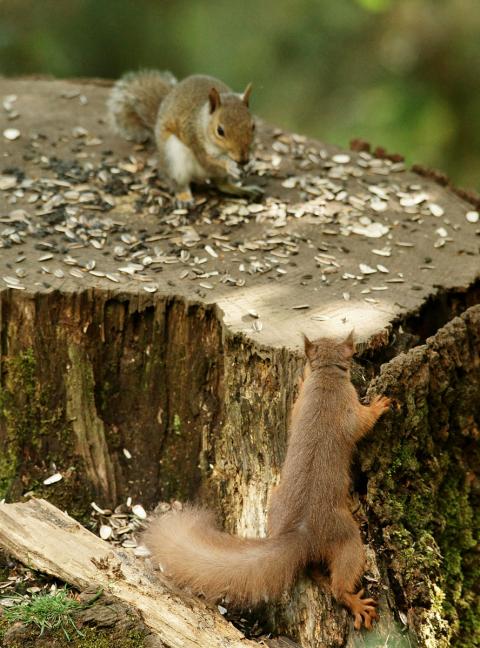
Work by Luc Wauters, Guido Tosi and John Gurnell in Italy and England found that Red squirrels which had a high percentage of their home range overlapping with Greys experienced a lower daily energy intake than those with little or no overlap. Moreover, as the percentage of overlap with Greys increased, the Reds had put on less weight by the spring. Wauters and his colleagues also observed that this Grey monopoly meant fewer male Reds were recruited into their study populations when there were lots of male Greys in the area, and fewer female Reds could settle in years or sites where there were lots of Greys. It appears that this situation does not just include available food and the biologists also observed competition between Reds and Greys for food and scatter hoarded seeds, more specifically Greys raiding the caches of Reds. The suggestion is that loss of caches to Greys represents a significant loss of winter calories and this contributes to their poorer condition and reduced reproductive output during the following year.
While many accounts of local Red squirrel extinction correspond to the arrival of Greys, there are outliers. In Norfolk, for example, Red squirrels disappeared 18 years before the first Grey was sighted, which may indicate forest management was a bigger factor, but we have too little information to know for sure. The more interesting outliers are those where the two species have co-existed for a prolonged period. At Hamsterley Forest in County Durham, for example, Greys and Reds co-existed for at least 16 years and there are anecdotal reports that the two species have lived together for 60 years or more in some areas, while at Racconigi in northern Italy (a habitat similar to Hamsterley) Reds became extinct only eight years after the first Greys were reported.
If competition for resources means that Reds and Greys can't live together, though, how might we explain examples of prolonged coexistence? The answer may lie in habitat partitioning; sharing the same area by either exploiting different resources, or exploiting the same resources in different ways or at different times. In their 2002 paper to the Journal of Applied Ecology, the Oxford University zoology team led by Jenny Bryce presented data from the population of Red and Grey squirrels that have seemingly coexisted for some 30 years in Scotland's Craigvinean Forest. Bryce and her colleagues found that, although Red and Grey ranges overlapped, there was a distinct partitioning of resources within the habitat; Reds chose areas of Norway spruce (Picea abies), while Greys preferred patches of mixed conifers and broadleaf trees. While the biologists found no evidence that either species avoided the other, they suggested that this habitat partitioning may have reduced the competition enough to allow them to be neighbours.
Greys out-competing Reds - Breeding
The 'Greys out-breed Reds' hypothesis asserts that Greys produce more young per season than Reds, which allows them to rapidly increase their population and expand their range, pushing Reds out as they go.
Work by Luc Wauters, Guido Tosi and John Gurnell in Italy and England, published in the Journal of Animal Ecology during 2004, found that the presence of Greys resulted in fewer Red females breeding during the summer and fewer instances of multiple litters. This lower fecundity was attributed to the females being in poorer condition in areas with Greys than in those with only Reds. In their mixed broadleaf sites, when Greys were present Red females had lower body weight, produced fewer kittens, of which fewer survived and, of those that did, more dispersed. Interestingly, although the summer breeding was affected by Greys, they had no discernible impact on spring breeding.

This is often given as an independent factor in the decline of the Red squirrel when, in fact, it is the result of the competitive exclusion described above. Indeed, the overriding influence on squirrel breeding potential is the seed crop, particularly in conifer forests, which makes teasing apart the intricacies of any relationships difficult. Both species have very similar breeding potentials, with equivalent fecundity and roughly the same average litter size.
Disease-mediated decline
Conventionally, it has been considered that competition between Reds and Greys has been the main reason for the decline of S. vulgaris. In a recent paper to Ecology Letters, however, Daniel Tompkins and colleagues report the results of their simulation model, which found an unrealistically slow replacement rate of Red squirrels by Greys when competition alone was considered. In other words, their model suggested competition alone cannot account for the rate and pattern of Red decline in the UK. Instead, the biologists argued that disease plays a crucial role.
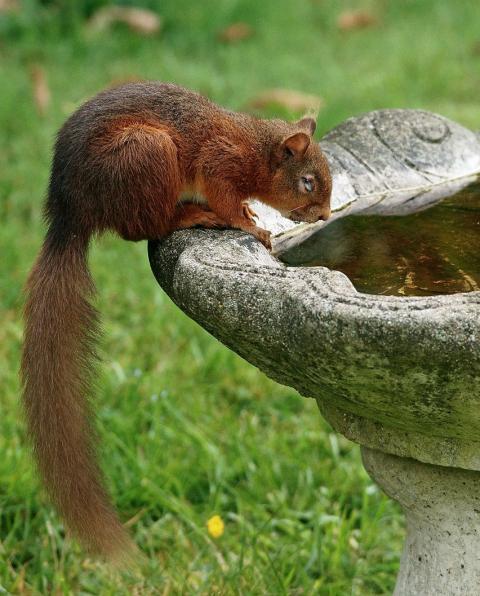
Perhaps the most off-cited and well publicised disease affecting squirrels is the squirrel poxvirus (SQPV), sometimes colloquially referred to as "parapox" or "squirrel pox". The virus causes swollen lesions to the face, ears, feet and flanks of Red squirrels and is typically fatal within a couple of weeks. Some individuals recover from infection, but this appears to be only 8-10% of infected animals. The origin of SQPV in Britain is unknown, but it is suspected to have been introduced with the Grey squirrel and a variant of the virus is present in Greys in eastern North America. In Britain seroprevalence (an indication of recovery from a virus) is high in Grey squirrels at 80-90%, although this varies across the country and in their chapter in The Grey Squirrel: Ecology & Management of an Invasive Species in Europe, Tim Dale and Julian Chantry report that 41 (25%) of the 166 squirrel carcasses they tested were positive for SQPV.
Unfortunately, just as we still do not know the SQPV virus' origin, if Greys do pass on the disease to Reds, we don't yet know what the main route of infection is. Several methods have been speculated upon, including direct contact, sharing the same feeding stations, and that shared parasites may all facilitate SQPV transmission. Indeed, laboratory studies in the USA have demonstrated that the squirrel fibromatosis virus -- often, confusingly, also referred to as squirrel pox -- can be spread by insects, particularly the mosquitoes Aedes aegypti and Anopheles quadrimaculatus. At the same time, in a 1995 edition of the National Provident Institution Red Alert UK Newsletter, squirrel biologist Ian Keymer suggested that feeders acting as focal points could increase the risk of disease transmission within and between species.
Transmission of disease across feeders is clearly of concern and the Cumbria-based squirrel preservation charity Red Alert recommend that people with squirrel feeders clean and disinfect them every two to four weeks. Although anecdotal, it is interesting to note that in Reds showing signs of SQPV infection tend to exhibit lesions on the feet, stomach, groin and face that are consistent with areas of the body used during scent-marking -- this may add credence to the idea that this disease can be picked up from surfaces to which infected individuals have been in contact. (See Squirrelpox QA)
In a paper to Epidemiology and Infection during 2006, Steven Rushton and colleagues presented their analysis of records of Red and Grey squirrel distribution in Cumbria between 1993 and 2003 compared with confirmed cases of SQPV. They found that Red populations declined between 17 and 25 times faster in regions where SQPV was present in Grey populations than where it wasn't. This suggests that SQPV is a significant threat to the survival of Red squirrel populations in Britain. Their analysis also calculated that a sustained strategy of control, removing 60% of Grey squirrels during the invasion period from 1993 to 2003, could have suppressed the decline in red squirrels in Cumbria.
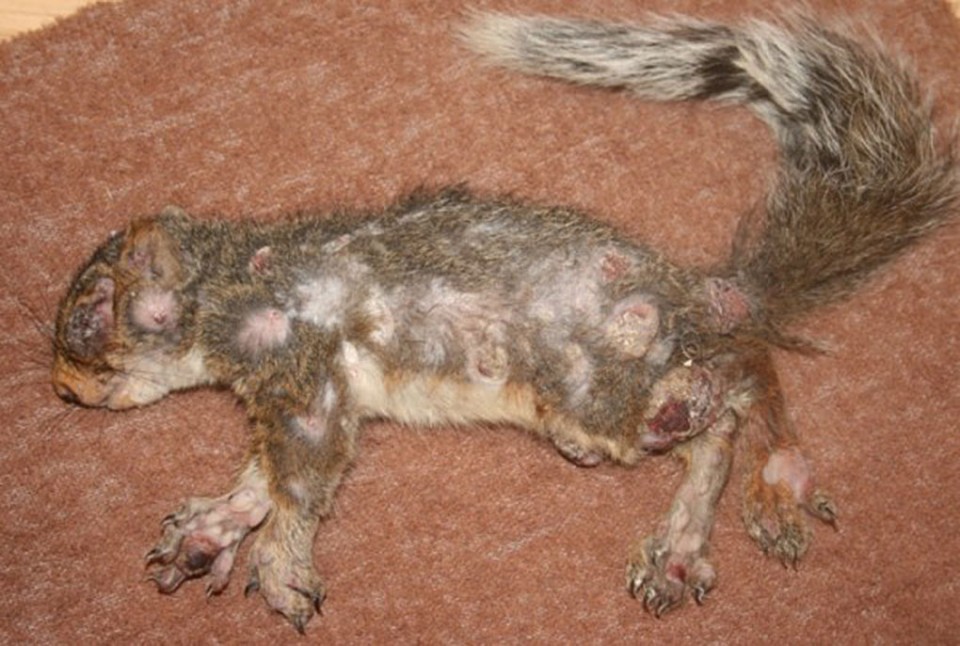
Steven Rushton at the University of Newcastle upon Tyne and his colleagues sum up the SQPV situation quite neatly in their 2000 paper to the Journal of Applied Ecology, in which they write:
"Indeed the grey squirrel-parapoxvirus interaction with the red squirrel could be described as 'apparent competition' mediated by an infection agent, as in the case of the pheasant and grey partridge, because the virus gives some advantage to grey squirrels."
Habitat loss & management
The final factor implicated in the decline of the Red squirrel is loss of, or change to, habitat. When the ice sheets of the last glaciation began to retreat from Britain about 15,000 years ago, arctic trees like aspen, birch and willow were the first to colonise the landscape. These were followed by pine, hazel, alder, oak, elm, lime, ash, holly, hornbeam and finally maple. Following many thousands of years of interspecific competition for light and space, the resulting wild-wood represented a dense mix of species covering most of the mainland by about 4,000 years ago. Indeed, it has been estimated that more than 80% of Britain was covered in forest at the peak of this wild-wood; the figure today is less than 20%.
Historical records show an almost constant process of deforestation until the end of the 19th century. Deforestation was instigated for various reasons, but occurred particularly in response to demand for timber for construction in the lowlands, and to clear land to provide grazing for livestock, particularly in the uplands. The First World War reminded us just how important our forests are to us and, at the beginning of the 20th century, there was a drive by the newly-established Forestry Commission to plant conifer trees in place of the ancient and slow-growing broadleaf woodlands. Conifers were chosen because they thrived in the acidic soils and cold, wet and exposed environment of the Scottish and Welsh uplands; most of the other prime locations were taken by agriculture. Red squirrel numbers recovered in these plantations and reached their peak numbers during the 20th Century.
Ultimately, some conservationists have suggested that this change in forestry, coupled with changes in some agricultural land management practices, which may have benefitted the more adaptable Grey, has contributed more to the decline in Reds than competition with Greys or SQPV. Writing in The Influence of Man on Animal Life in Scotland, James Richie considered the Red squirrel's decline in Scotland attributable to deforestation:
"The great far-reaching cause of the extermination of the Squirrel was the destruction of the forest. We have seen that at an early date the woods of southern Scotland were destroyed to make way for cultivation and sheep pasture; and at an early date the Squirrel disappeared from the Lowlands."
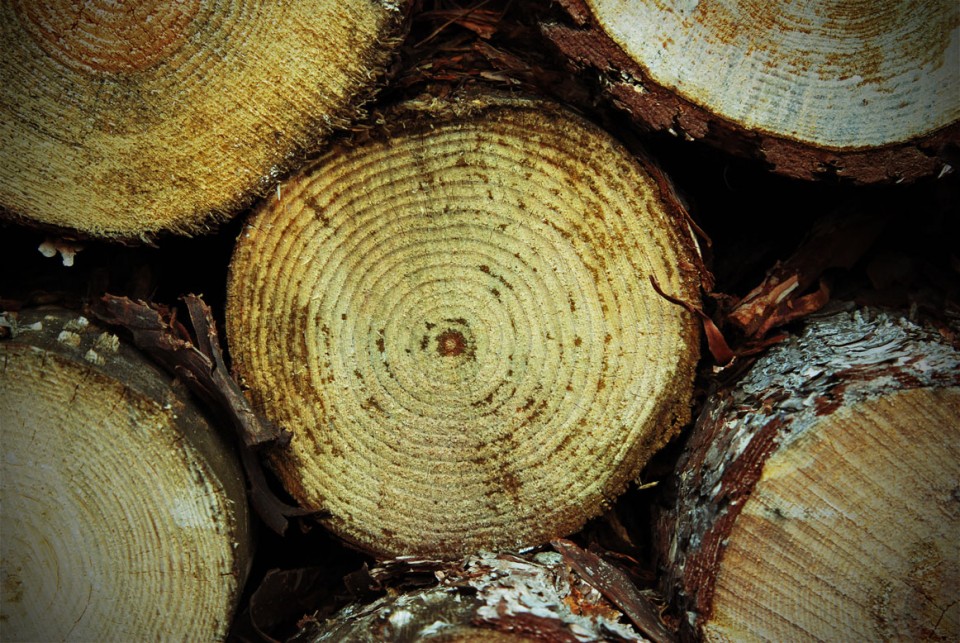
It could be argued, however, that large-scale conifer afforestation plans have been a lifeline to our Red squirrels, providing larger areas of habitat in which they thrive and Greys struggle to become established. Genetic work by Marie Hale at Newcastle-upon-Tyne University, for example, suggests that the planting of Kielder Forest linked existing woodland fragments in southern Scotland and Northumberland with those in eastern Cumbria and allowed Red squirrels to cross an area of open grass and moorland that would previously have prevented migration.
Habitat changes, especially habitat fragmentation, have no doubt played some part in the current condition of our Red squirrel population, although the current evidence is that this is a contributory factor rather than a leading cause of the decline. Indeed, in his study on the replacement of Reds in eastern England, John Reynolds found no evidence to support the idea that Red squirrel decline was a result of habitat change. Thinking ahead, however, it will be difficult, arguably impossible, to re-stock the UK with Red squirrels without reconnecting our woodland and forest habitats.
What can be done?
Red squirrel conservation generally takes three forms: reintroduction; habitat management; and Grey control. They are discussed individually below, but it is important to keep in mind that any successful restoration project will likely involve elements of all three.
Reintroduction
During the 17th and 18th centuries, with squirrel numbers in the countryside low from a combination of widespread deforestation and persecution, thousands of Red squirrels were imported from Europe into English markets where they were sold. In his The True History of Grey Squirrels in Britain, John Bryant noted that 20,000 imported Reds were sold in London during 1837 alone. Some were sold as pets, others were probably bought for their fur, but it seems many were either deliberately released as part of early attempts to boost numbers, or escaped from their captivity into the wild.
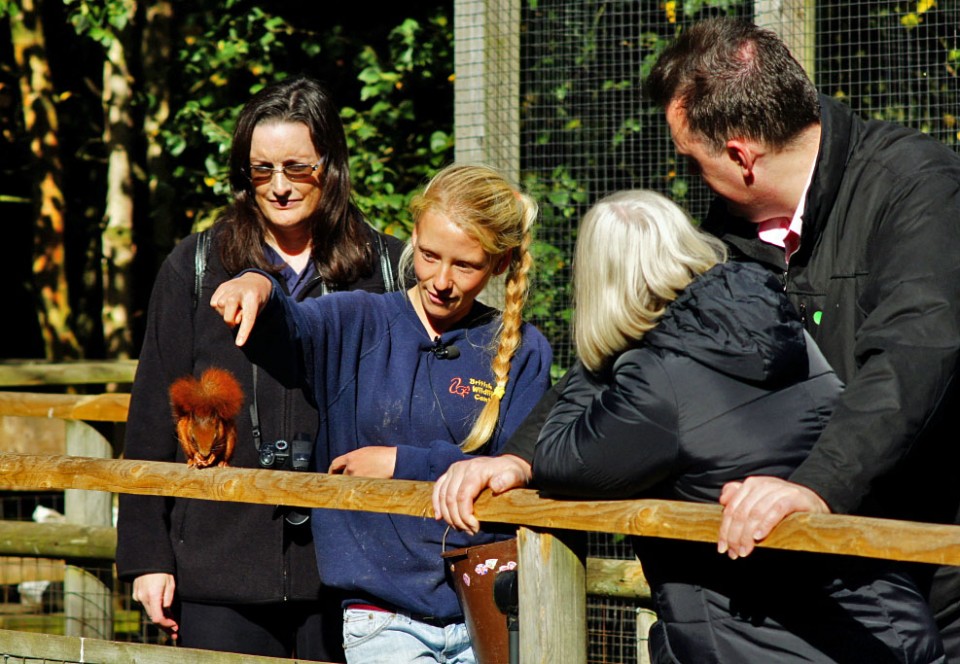
In Scotland, records of imported squirrels being released into the wild date back to 1772, while squirrel reintroductions in Ireland date to at least 1815. There are records suggesting that some reintroductions were actually translocations, squirrels taken from one part of the UK and released in another, but most appear to have been of continental animals, from Norway and Sweden in particular. Indeed, a genetic study carried out by a team led by Marie Hale at Newcastle University, published in the journal Conservation Genetics during 2004, found that the majority of Red squirrel populations in Britain have their origins in Scandinavia. Hale and her colleagues observed that, since its appearance in 1966, the Scandinavian haplotype has rapidly become the most dominant in northern England and noted:
"Therefore, it seems that in the eastern region [of Britain] at least, S. v. leucourus [the subspecies considered native to the UK] has been almost wholly replaced by individuals with European ancestry."
Reintroduction programmes in the UK have been plagued with issues; squirrels killed by predators or run over on local roads. An attempt to reintroduce Red squirrels in the south of England saw 14 released onto the Goathorn Peninsula of Furzey Island in Poole Harbour during 1993. The population was closely monitored and the results were disappointing -- none survived for more than four months, with half either eaten or cached by predators, primarily foxes.
Dissection of recovered squirrel carcasses revealed that the animals appeared stressed, suffering hypertrophied adrenals, and had lost weight. None of the females showed any sign of reproductive activity and, moreover, none weighed in above the 300g (10.5 oz.) threshold at which Red squirrels enter oestrous. Additionally, the tracking data indicated interference competition from the Greys that had colonised the conifer forests on the island. The Reds appeared reluctant to enter baited traps that had been used by Greys and, unusually, their ranges tended to overlap less with Greys than with other Reds. After initially showing promise, a similar project involving 10 young squirrels released into London's Regent's Park in 1984 ended in failure, as did and one in Thetford Forest that released 23 animals, which was shut down in 2001.

Some reintroduction projects have seen success, including one on the island of Anglesey in North Wales led by Craig Shuttleworth, although it is a constant battle to prevent Greys recolonising from surrounding areas. There are also several Red squirrel reserves in the UK now, including Formby in Merseyside and Kielder Forest District in Scotland. Paramount to any successful reintroduction or reserve is, however, how the habitat is managed and, in The Eurasian Red Squirrel, Stefan Bosch and Peter Lurz point out that the goal should be maintaining a stable seed crop throughout the year:
"As a result of early seed shed in North American Sitka spruce, strongholds dominated by plantations of this species should ideally contain 20 % of other conifer species to ensure a continued seasonal food supply into late winter and spring."
In a paper to Animal Biodiversity and Conservation, a team of Portuguese biologists, led by Rita Rocha at the Universidade de Aveiro, considered that many reintroduction attempts fail because there is insufficient follow-up monitoring of the population. The researchers argue that critical to any successful reintroduction is a strategy to reduce mortality, monitor the need for supplemental feeding, provide veterinary support and educate and engage the public. It should also be mentioned that reintroductions can be hampered by International Union for the Conservation of Nature (IUCN) directives, which require that the reasons for the original extinction be fully understood and that the issues have been addressed prior to any reintroduction getting underway.
Promotion of existing populations by providing supplemental food is often coupled with reintroductions. Squirrel feeders work well in forested habitats and we have good data to suggest that in many cases it will increase Red squirrel over-wintering body condition and consequently fecundity. In situations where public engagement means squirrel feeders in gardens, however, supplemental feeding has been linked to increased traffic accidents as squirrels cross roads to reach feeders.
Habitat management
This is a huge topic and one I do not plan to elaborate on here. Suffice to say that several woodland regeneration initiatives have been instigated over recent years in a bid to improve the condition of and to replenish Britain's woods and forests; these include Community Forest and National Forest projects. This is such a wide topic that those wanting to know more should check out the excellent sites by the Forestry Commission and the Woodland Trust. Oliver Rackham also provides a thoroughly readable account of our woodland history in his book Woodlands, and the reader is directed to that for further information on how woodlands have changed in Britain since the end of the last ice age.
Grey Control
Intuitively, removing, or at least controlling numbers of, Grey squirrels seems to be the most productive method of promoting re-establishment of Reds. Previous control/eradication programs, such as local authorities paying five shillings per tail during the 1950s, have, however, been unsuccessful and Grey populations have flourished. More recently, attempts at eradication have led to protests from animal welfare organisations and such groups have been a particular thorn in the side of biologists striving to eradicate Greys from northwest Italy. In June of 1997, Italy's National Wildlife Institute was taken to court by three animal rights groups under charges of illegal hunting, damage to state property and cruelty to animals. The two officers concerned were found guilty of cruelty to animals, although they were subsequently acquitted by the Appeal Court three years later.

In Britain, Grey squirrels are widely regarded as a pest species to be shot by landowners and killed by conservationists in areas where they encroach on Red populations. Over the years, various surveys have been conducted to assess public opinion towards culling programs. The results of one questionnaire, sent to organizations and private individuals across the UK who had expressed an interest in squirrel conservation and management during the autumn of 2000, were published in the journal Environmental Management in 2002. The 166 responses received showed that trapping was the most acceptable method of control, while poisoning was seen as the least acceptable. Overall, however, culling of wildlife in any form is generally not supported by the general public, not least because they are considered by many to be a waste of time and money. In January 2006, the Department for Environment, Food and Rural Affairs (DEFRA) announced that Grey squirrels in England were to face a widespread cull in a bid to protect the dwindling populations of Reds and, since then, several attempts at a cull have been made, all widely considered to have failed.
Given the population density of Grey squirrels in Britain, a significant problem for any culling plan is getting enough buy-in to make it as widespread and comprehensive as it needs to be. An intensive cull has succeeded in removing Grey squirrels from Anglesey in Wales, for example, but it involved some 200 volunteers, a project team and contractors, and took a decade to complete -- it is now a constant battle to prevent Greys spreading back in from the nearby mainland.
Not only is culling expensive and labour intensive, it is also prone to the Law of Diminishing Returns; the more squirrels you cull, the fewer there are and those remaining tend to be more wary and difficult to target. Consequently, as any cull plan progresses, it becomes increasingly difficult to find and remove the animals as the density drops; essentially, it takes more time and money to kill fewer squirrels and this makes the cost more difficult to justify. Nonetheless, in October 2014 the Prince of Wales ordered a cull of Greys on his Duchy of Cornwall estate and, in January 2015, the Forestry Commission announced the first national plan for Grey squirrel control.
As part of the EU Directive on invasive species that became law in 2015, the UK is expected to take steps to control species such as the Grey squirrel, although it remains to be seen whether this will remain in post-Brexit Britain. Those interested in learning more are directed to the Red Squirrels Trust Wales for the pro-cull angle and Animal Aid for the anti-cull debate.

With culling a contentious issue, alternative methods of reducing populations are always under investigation. When the respondents of the 2000 squirrel questionnaire were asked about their views on immunocontraception, most considered it more humane or acceptable than any of the other methods. Immunocontraception and surgical sterilisation are often proposed as more humane alternatives to lethal control. The idea behind both strategies is that the squirrels cannot breed and thus the population dies out gradually because there are no fresh recruits. At the same time the sterile individuals continue to maintain a territory and this prevents the influx of animals from surrounding areas that we see when culling is carried out. This is also generally seen as a suitable alternative by members of the public who may enjoy having squirrels visiting their gardens and are opposed to the idea of killing them. Both strategies are, however, deceptively complicated and the fact that projects working on other species, such as rabbits and deer, have shown promise does not mean the same is likely in rapidly-repopulating rodent populations. Furthermore, both options are only ever likely to be an aid to population reduction, rather than a "magic bullet".
Surgical sterilisation programmes have proven successful for a few key species, but have not been widely applied to wildlife. There are, for example, various projects across the world working to sterilise feral cats in a bid to bring down populations. One such trap-neuter-release scheme in the USA saw the number of cats on the University of Florida campus drop by two-thirds over an 11-year period, while similar schemes in Italy have seen reductions ranging from about one-fifth to one-third over a 10-year period. In terms of wildlife, I am only aware of one project, where sterilisation has shown promise for reducing fox (Vulpes vulpes) populations in Australia.
The process of sterilising an animal is a complex one and something that requires a qualified veterinarian and all the associated containment and care. The situation is further complicated because if sterilised animals are released back into the area of an eradication project they interfere with the monitoring and trapping of the remaining un-sterilised animals. Moreover, if studies on mice and rats are also representative of squirrels, we'd need to trap and sterilise at least 90% of the population to see numbers come down. This is less of an issue in larger animals with comparatively large territories because they're found at lower densities. In the case of Grey squirrels, where there may be tens or hundreds in a forest, the resource required to trap and sterilise enough is huge and it may even be an impossible task.
Immunocontraception is a type of sterilisation that uses the animal's own immune system to attack their sex cells (i.e., sperm and eggs) or reduce the development of reproductive organs. In 1997, University of Sheffield molecular biologist Harry Moore and colleagues reported on a potential antibody that could be used to prevent squirrel sperm binding with the egg and thus inhibit fertilisation.

More recently, in a 2012 paper to the Journal of Zoo and Wildlife Medicine, a team of biologists led by Murali Pai at the North Slope Borough Department of Wildlife Management in Alaska, presented the results of their experiments injecting Grey squirrels with the immunocontraceptive GonaCon. The study didn't address the impact of the contraceptive on females, but did find that males injected with 1mg/mL of vaccine had a 90% reduction in testes weight and complete failure of sperm production when compared with control animals injected with saline. Furthermore, the vaccine didn't have any observable effect on the squirrels' pituitary gland, circulating testosterone or any noticeable side effects, suggesting that sterilised animals are likely to continue to behave normally if returned to the population. As with surgical sterilisation, though, catching and injecting 90%+ of the population is labour-intensive and expensive, arguably impossible, so some form of bait-delivery system for any immunocontraceptive would need to be developed that only targeted Greys.
In conclusion…
If we take nothing else from this appraisal, it is clear that no single hypothesis satisfactorily explains the decline of Red squirrels in Britain; even when taken in concert, there are still some situations that fall outside the explanation. Nonetheless, competition for food with Greys, the squirrelpox virus and, to a lesser extent, the way we've historically managed our woodland can explain the majority of situations.
Back in 1932, Russian biologist Georgii Frantsevich Gause published what we now call the "competitive exclusion principle", or Gause's Law, based on his experiments with yeast and protozoa. This principle states that 'no two species with similar ecological niches can coexist in a stable equilibrium while ecological factors remain constant'. In other words, two species that have the same requirements for food and space at the same time, something we call niche overlap, can't live happily together -- the more efficient of the two will always outcompete the less efficient. The studies to date suggest that there is a 70-80% niche overlap between Red and Grey squirrels and, in short, that Greys are the more efficient of the two species. Indeed, in his now famous "Concluding Remarks" paper at the Cold Spring Harbor Symposium on Quantitative Biology in 1957, the eminent ecologist G. Evelyn Hutchinson summed up the situation perfectly, writing:
"Even in the rather conspicuous case of the introduction of Sciurus caroliniensis Gmelin and its spread in Britain, the popular view that the bad bold invader has displaced the charming native S. vulgaris leucourus Kerr, is apparently mythological. Both species are persecuted by man; S. caroliniensis seems to stand this persecution better than does the native red squirrel and therefore tends to spread into unoccupied area from which S. vulgaris leucourus has earlier retreated."
We should be careful of 'knee-jerk' reactions based on good intentions. It is necessary to fully understand the problem first, in order to construct a science-based long-term management plan for the UK's Red squirrel population. After all, it would be ironic to "save" the Red from the Grey, only to drive it back to the brink of extinction in some other way. We only hope it is not too late.